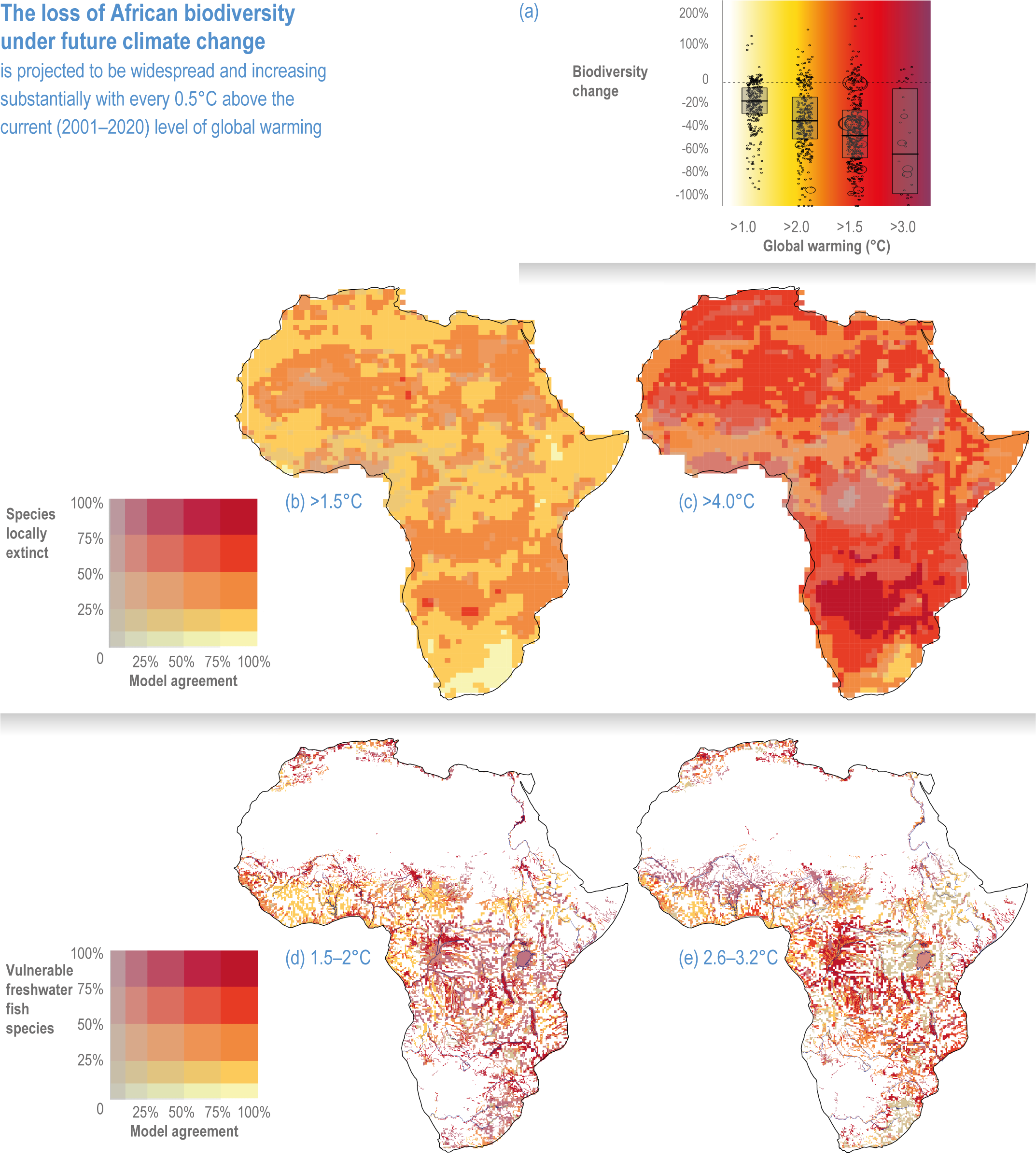Figure 9.19
Figure caption
Figure 9.19 | The loss of African biodiversity under future climate change is projected to be widespread and increasing substantially with every 0. 5°above the current (2001–2020) level of global warming (high confidence).
(a) Projected biodiversity loss, quantified as percentage change in species abundance, range size or area of suitable habitat increases with increasing global warming levels (relative to 1850–1900). Above 1.5°C global warming, half of all assessed species are projected to lose >30% of their population, range size or area of suitable habitat, with losses increasing to >40% for >2°C. The 2001–2020 level of global warming is around 1°C higher than 1850–1900 (IPCC, 2021). Boxplots show the median (horizontal line), 50% quantiles (box), and points are studies of individual species or of multiple species (symbol size indicates the number of species in a study).
(b–c) The mean projected local extinction of vertebrates, plants and insects within 100 km grid cells increases in severity and extent under increased global warming (relative to 1850–1900). Local extinction >10% is widespread by 1.5°C. Pixel colour shows the projected percentage of species undergoing local extinction and the agreement between multiple biodiversity models.
(d–e) The mean projected increase in species of freshwater fish vulnerable to local extinction within 10 km grid cells for future global warming. Around a third of fish species are projected to be vulnerable to extinction by 2°C global warming. Pixel colour shows the projected percentage of species vulnerable to extinction and agreement between multiple vulnerability models. In (a), data were obtained from 22 peer-reviewed papers published since 2012 investigating the impacts of projected climate change on African biodiversity. When a paper provided impact projections for several time periods, climate change scenarios or for more than one species, each impact was recorded as an individual biodiversity impact projection, resulting in a database of 1165 biodiversity impact projections. Data were initially collected by Manes et al. (2021) as part of a larger literature review for Cross-Chapter Paper 1 on Biodiversity Hotspots and then expanded to include areas outside of African priority conservation areas (see Table SM 9.4). The literature review was limited to peer-reviewed publications that reported quantifiable risks to biodiversity, eliminating non-empirical studies. In (b–c), projections are based on intersecting current and future modelled species distributions at ~10 km spatial resolution from two recent global assessments of climate change impacts on terrestrial vertebrates (Newbold, 2018; Warren et al., 2018). In (d-e) projections are based on intersecting future species vulnerabilities from two recent assessments of climate change vulnerability of freshwater fish species (Nyboer et al., 2019; Barbarossa et al., 2021).
